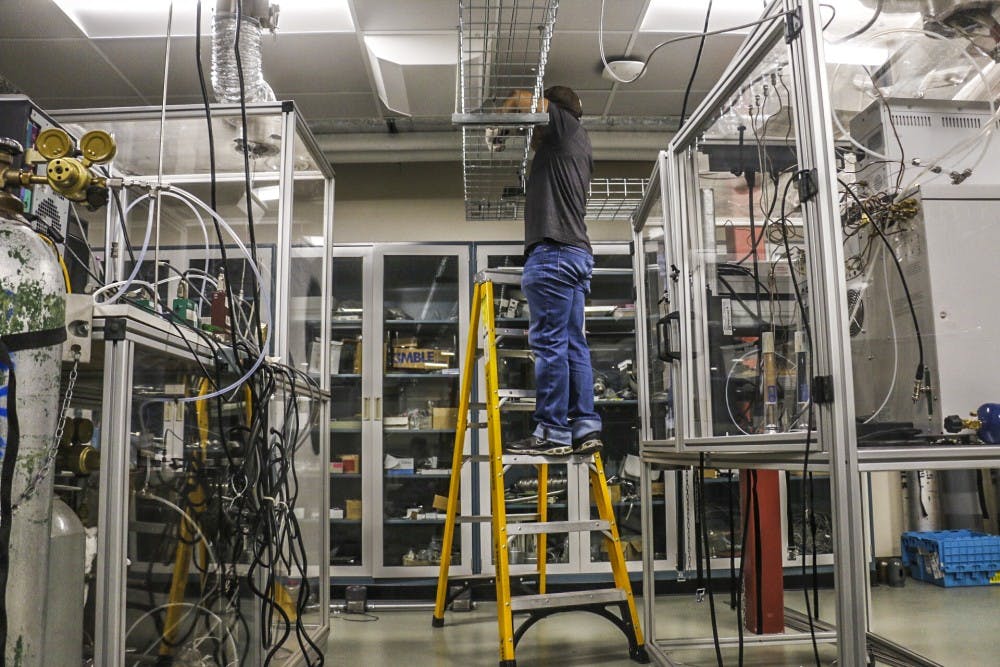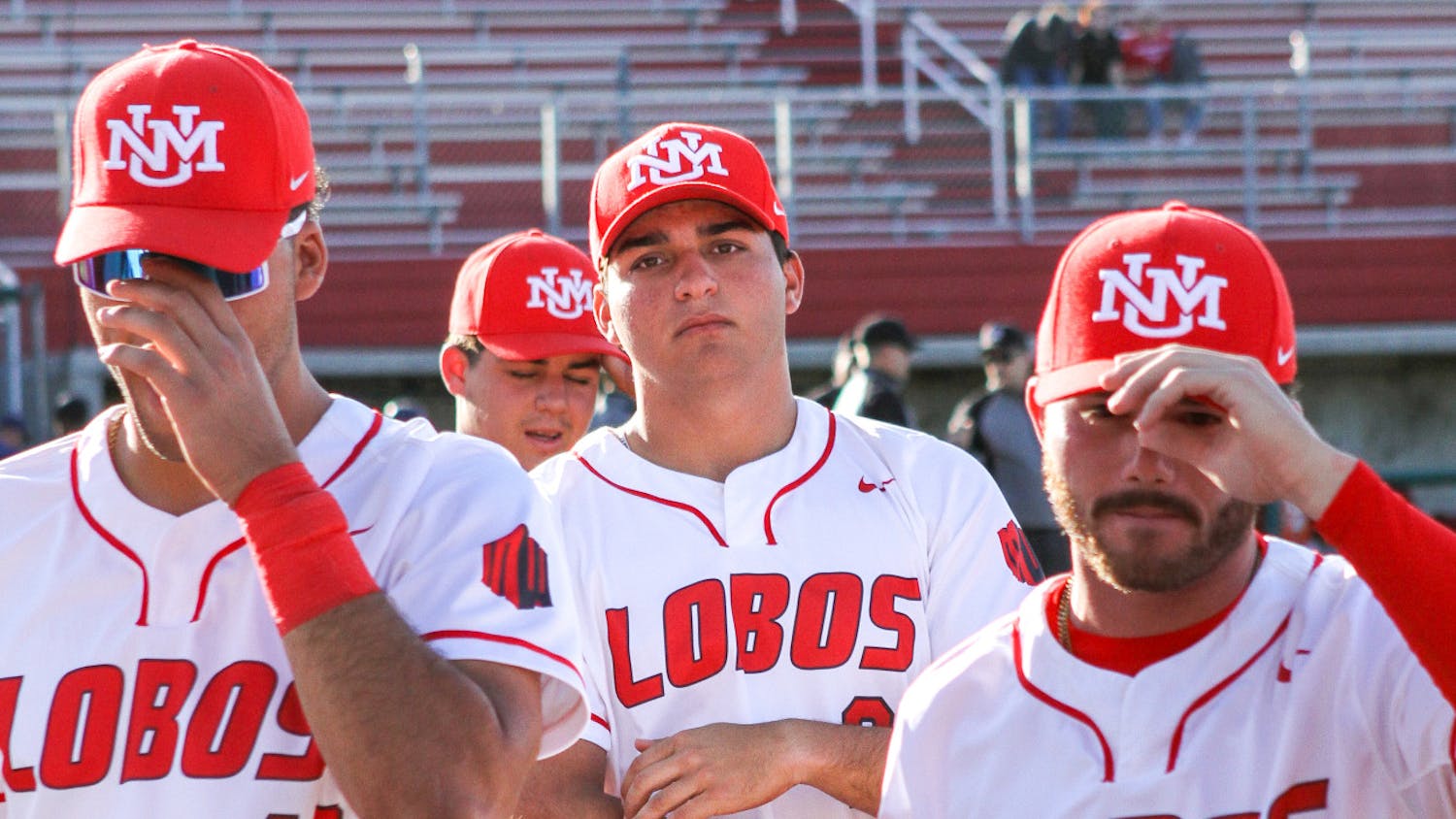UNM Safety and Risk Services is still in conversations with the New Mexico Environment Department — and may be fined — over numerous safety violations, mostly concerning the handling, labeling and disposal of hazardous materials.
Carla Domenici, director of SRS, said they are still in discussions with NMED over almost 30 violations, stemming from an inspection conducted in March 2016.
UNM Safety & Risk Services Department provides “comprehensive occupational safety, health, and environmental management” services to ensure that departments are providing a safe working environment.
Allison Majure, NMED communications director, said the Environment Department’s Hazardous Waste Bureau’s oversight assures New Mexicans that hazardous waste is managed safely and that contaminated sites are cleaned up, in a manner that is safe and protective of human health and the environment.
“Following our March inspection and subsequent issuance of fines to the University of New Mexico, UNM has completed all corrective actions and returned to compliance,” Majure said. “The violations which were observed during the inspection were assessed penalties and UNM and NMED are currently in negotiations concerning the final penalty amount.”
The violations against UNM SRS are listed in a letter to President Bob Frank, dated June 17, from John E. Kieling, Chief of Hazardous Waste Bureau.
Many of the violations concern hazardous waste from laboratories in multiple campus departments and, according to the document, “the majority of hazardous waste generated at UNM...includes spent solvents, acutely toxic waste, corrosive waste and flammable waste.”
The violations included failure to label containers, failure to keep containers closed, operating without a permit, failure to conduct annual training, failure to conduct weekly inspections and failure to properly store universal waste, among others.
Treating hazardous waste without a permit was one of the more serious violations incurred, Majure said, and can carry a penalty of up to $10,000.
Majure said each fine issued by NMED was based on the potential for harm and the extent of deviation from the regulations, in concert with the type of waste, the amount of waste, the potential release of waste, and other factors.
Some of the violations concerned failure to pay business fees and hazardous waste generator fees. As a Hazardous Waste Generator, UNM is held to fees, which they failed to pay for 2013 and 2014. As of June 6, UNM SRS has since paid those fees.
Domenici said UNM SRS has been working through the alleged violations with NMED, which can be a “lengthy process.”
Get content from The Daily Lobo delivered to your inbox
“We are responding to them and making corrective action, where appropriate,” she said. “It takes a while for any of these to resolve.”
Chemanji Shu-Nyamboli, Environmental Health manager for UNM, said that NMED first issued a Notice of Violation and proposed penalties, but also gave an opportunity for UNM SRS to respond.
In the June 17 email, NMED evaluates the response of UNM SRS to the violations and, for almost half of the 30 listed violations, NMED either “respectfully disagreed” with UNM SRS’s initial response and/or requested further documentation from the University.
“We’re looking at each individual alleged violation and responding appropriately,” Shu-Nyamboli said. “There are areas where we disagree with the NMED and we will let them know, ‘this is where we disagree and this is why.’”
According to the email, NMED required that, within 30 days, UNM provide a “written description of the actions” taken to address the violations, as well as a schedule for corrective actions “not yet completed.”
“Due to the nature of the violations listed above and UNM’s past history of noncompliance with 20.4.1 NMAC, NMED will propose a civil penalty for these violations,” the email states. “20.4.1 NMAC” refers specifically to hazardous waste management.
While Domenici couldn’t speak to the past “noncompliance” since she didn’t work for SRS until 2011, she said any proposed fines against SRS aren’t “technically assessed” until the resolution process is complete.
In one of the violation citations, inspector Aaron Coffman observed a “failure to mark containers or hazardous waste” and “multiple instances of unlabeled, mislabeled or incompletely labeled containers” throughout UNM campus laboratories, including ones in Castetter, Dominici, Centennial and Northrop Hall.
While more than 250 UNM laboratories generate hazardous waste, Castetter Hall, Centennial Engineering Center and Clark Hall contain the highest number of labs on Main Campus with 58, 40 and 32, respectively.
Domenici said, while laboratories are run by the Principal Investigator, the lab personnel and the chemical safety officer, all UNM and HSC labs are overseen by Academic Affairs, HSC Research or the OVPR. SRS’s role is to advise them on safety issues.
Although SRS does not have any policing authority, their duties include conducting laboratory inspections and picking up waste, she said, in addition to serving as the point of contact with regulators as well as technical and subject matter experts.
“(We need to) look at areas where there is potential for improvement, build better relationships with different stakeholders and, moving forward, make sure we are as close to 100 percent compliant as we can be,” Shu-Nyamboli said.
Domenici said the process has been a learning experience.
“When you deal with regulators as regularly as we do, you never enjoy an inspection. But when they come in and they look at things, you can use it as an opportunity to make positive change and make the University safer,” she said. “And so that’s what we’ve done. We’ve been working very diligently to look to see if there are practices that we could change or improve.”
One example of that change, Shu-Nyamboli has implemented Hazardous Waste Handling Training, which is offered to all employees who handle any sort of hazardous waste.
“It wasn’t something they asked us to do or something they said we weren’t doing, it was just something we decided to do to educate the community and take that further step to make the campus safer,” she said. “That has been one very positive change we’ve made.”
Although it is not certain what fines will be assessed, Domenici is hopeful that, within three to six months at most, the matter will be resolved with NMED.
She said, through the process, NMED has been “very cooperative” and “easy to work with,” while SRS has also worked very closely with “everyone involved, from the Provost’s office down to lab personnel.”
“Internally, everybody has really come together,” Domenici said. “I’ve actually seen even an improvement in communication and collaboration since it happened. My goal is to use this as a springboard to improve all of the programs across campus, to get the campus community to react and cooperate with SRS and engage with us as partners, so we make the campus safer.”
Matthew Reisen is the news editor at the Daily Lobo. He can be reached at news@dailylobo.com or on Twitter at @MReisen88.






